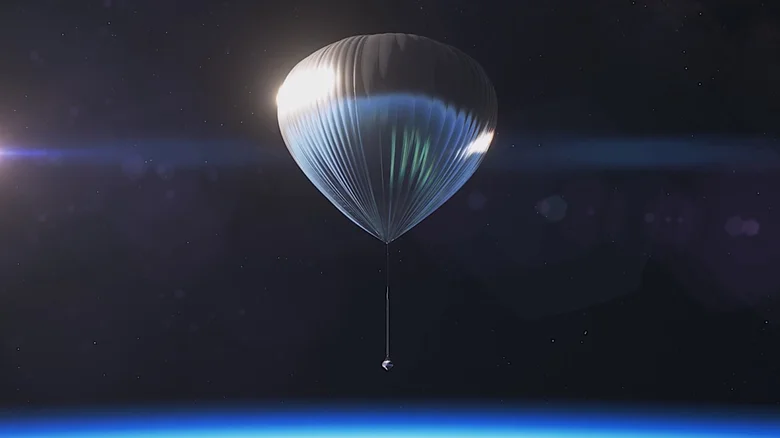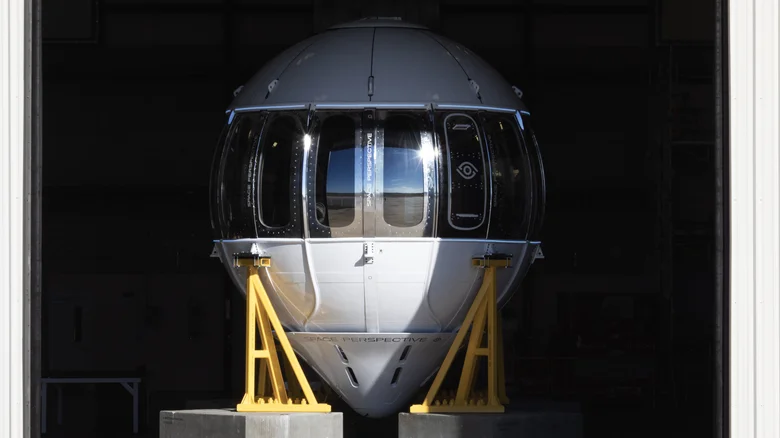
Commercial space travel is a fairly small industry. Despite Elon Musk’s plans to colonize Mars, you have only two real options for space tourism – Jeff Bezos’ Blue Origin and Richard Branson’s Virgin Galactic. But now a third company has entered the fray, with a unique emphasis on accessibility and sustainability. Space Perspective has completed and unveiled the third commercial suborbital spacecraft ever built, and it also boasts the honor of being the seventh human transportation spacecraft built in the last five decades. It is completely designed and built in-house, and each of its main elements is patented. The capsule, called Excelsior, is part of the Neptune spacecraft.
The spherical ship offers about 2,000 cubic feet of space, which is twice as much as people can experience on a Blue Origin or Virgin Atlantic ship, according to the company. The final product will also have its share of luxury touches: Space Perspective promises cocktails and high-speed Wi-Fi, among other things. The “space living room” can accommodate up to eight passengers, or “explorers” as they are called in Space Perspective, and three crew members. Not counting the space stations, it will be the largest spacecraft in operation when it eventually takes to the skies.
With the 700-foot balloon and capsule ready and the launch vehicle nearing completion, the space tourism company plans to conduct test flights before making its first trips in 2025. More than 1,750 people have booked tickets, and the number is expected to reach 400,000 by the end of 2024. Even with this number of bookings, Space Perspective is already on track to become the most successful commercial space travel company at this time. But how is it going to get to space and what sets it apart from the competition?
How does the Space Perspective launch?

When you think of traveling into space, the first image that comes to mind is likely to be of a rocket spewing flames and making its way through the sky. That’s how it usually happens, and that’s how you get there with Bezos’ Blue Origin. However, the company’s two main competitors have different views on how to get to space. Virgin Galactic performs a suborbital flight by attaching itself to a carrier aircraft before breaking away from it with its own rockets at altitude. What is most unique is that Space Perspective does not rely on rockets at all.
Instead, according to the company, it rises above 99% of the Earth’s atmosphere in a balloon big enough “to hold the Statue of Liberty.” At the end of the six-hour ascent, the pressurized capsule rises to an altitude of 100,000 feet, allowing a 360-degree view of the Earth and space, and then gently descends back to Earth and lands in the ocean.
This is potentially a more affordable way into space

This method of space travel has several advantages. For many, its carbon neutrality will be a major advantage. Rocket launches require huge amounts of fuel, and while most may consider the work of agencies like NASA to be important, private space travel may be seen as an environmental disaster caused by vanity. There is also the problem of general accessibility.
Space Perspective estimates the cost of its first flights at $125,000. Although this is still an incomprehensible amount for many, it is very low in terms of space travel. Blue Origin’s first flight cost up to $28 million, and today it will still cost you a seven-figure sum. Virgin Galactic, a cheaper option, recently raised its prices to $450,000 – and if you want to ride SpaceX’s Crew Dragon, be prepared to part with as much as $55 million.
The impact on the human body should also be taken into account. A traditional space launch hits those on board with a force of about 3 gigahertz. While most people can handle it, for some, it is still stressful and the body cannot cope with it. Space Perspective claims that people on board their capsule will feel as comfortable as if they were on board an airplane. This is likely to open the doors and boundaries of space to a much wider group of people.

